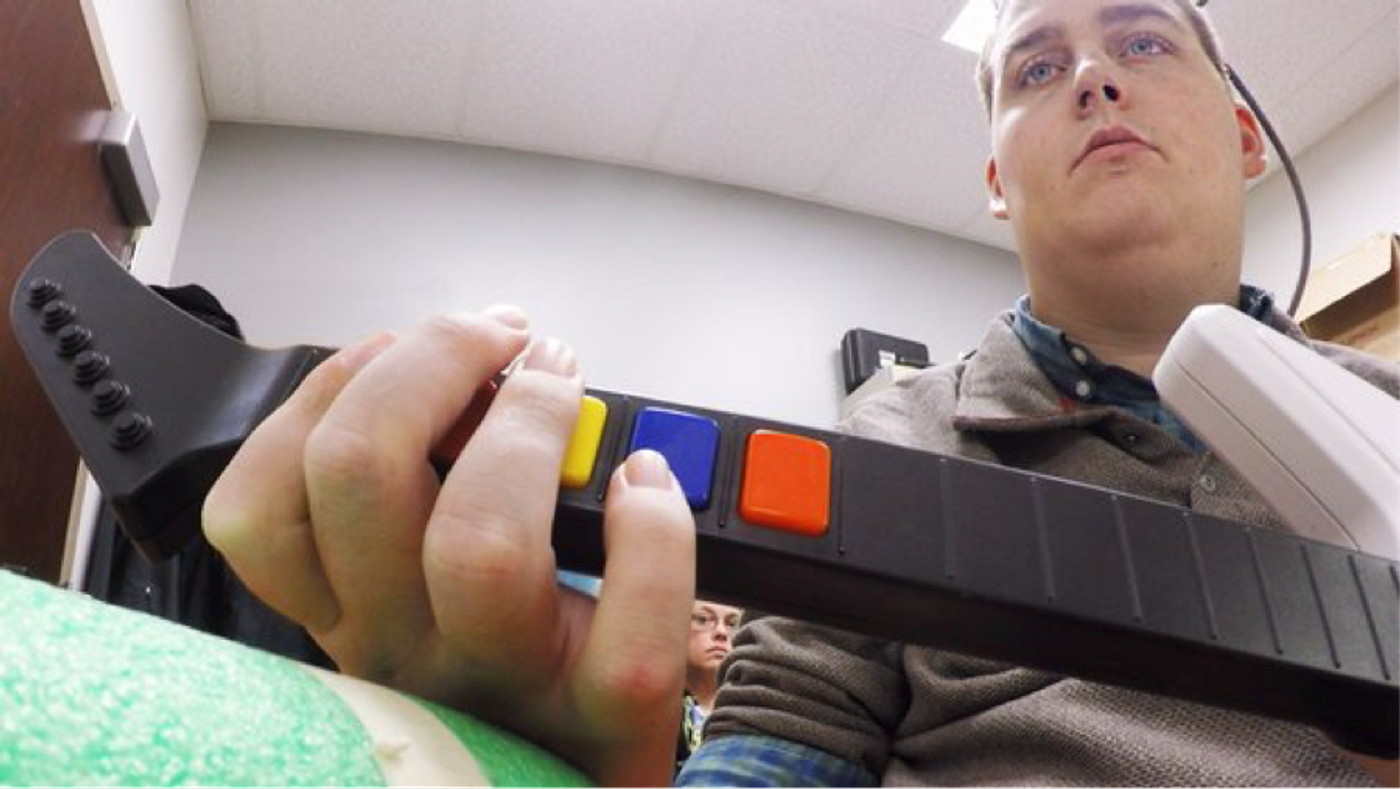Imagine pouring a cup of coffee, stirring it, and lifting the cup to drink. Sounds simple for most people, but being able to do these tasks represented the biggest breakthrough for neuroscientists and Ian Burkhart, who happens to be a quadriplegic. For the first time, scientists demonstrate that brain implants allowed Burkhart to have six different finger movements that were impossible after his paralysis. The technology gives great hope for paralyzed people around the world to one day have use of their limbs again.
Burkhart was 19 when a driving accident left him paralyzed from the chest down. Two years ago, he underwent an experimental procedure that involved implanting an array of electrodes into his left primary motor cortex. Then he spent the next 15 months in rigorous session to train his brain to bypass the spinal cord and let his thoughts control his movements.
As Burkhart’s brain emitted signals, the implant converted these into electrical signals that are registered by electrodes attached to Burkhart’s wrist, allowing his muscles to move accordingly to his thoughts. This technology is the first of its kind, and the prototype is called a neural bypass system.
"We're showing for the first time that a quadriplegic patient is able to improve his level of motor function and hand movements," said Ali Rezai, neurosurgeon at Ohio State's Wexner Medical Center and senior study author.
?It took about 2 months of intense training before Burkhart could use his thoughts to open and close his hand. But over time, as man learned from machine and machine learned from man, Burkhart has now been able to have six different wrist and hand movements. For example, he can rotate his hand, make a fist, and pinch his fingers. With this range of motility, Burkhart can swipe a credit card, feed himself, and even play the Guitar Hero video game.
"It's amazing for the patient to see a hand that's been lifeless for five years to move again on command," said Rezai.
To be sure, this first-of-its-kind technology isn’t without major challenges. The procedure to get the implant is highly invasive, and won’t be suitable for every candidate. Furthermore, researchers are still tweaking its components to make the device wireless and less clunky. As is, Burkhart can only have motion in his hands when he goes into the lab for test and training. The team did not speculate how long it will take before the technology can be adopted for home use. "The goal is to make this solution be used in the daily lives of people with disabilities," said Rezai. "It's really about having patients be more independent and have more control and autonomy."
But Burkhart’s story may not be slated for a happy ending forever. His implant was part of a federally approved clinical study, and was meant to be in for one year. While this has been extended to two years, Burkhart will need to have it removed at the end of the trial’s duration, due to risks for infection, scarring, and device degradation. Despite this end, Burkhart and his team remain optimistic and encouraged by all that they’ve learned to hopefully forge on and create more lasting solutions for paralyzed people.
Additional sources:
MNT,
CNN,
Slate









